
|
Astronomy Picture Of the Day (APOD)
 Sigma Octantis and Friends
Sigma Octantis and Friends
27.06.2018
South pole star Sigma Octantis (of the constellation Octans) is on the left of this starry expanse spanning over 40 degrees across far southern skies. You'll have to look hard to find it, though.
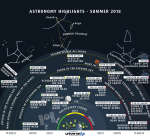 Highlights of the Summer Sky
Highlights of the Summer Sky
26.06.2018
What can you see in the night sky this summer? The featured graphic gives a few highlights for Earth's northern hemisphere. Viewed as a clock face centered at the bottom, early (northern) summer sky events fan out toward the left, while late summer events are projected toward the right.
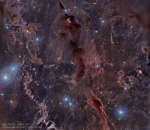 Dark Nebulas across Taurus
Dark Nebulas across Taurus
25.06.2018
Sometimes even the dark dust of interstellar space has a serene beauty. One such place occurs toward the constellation of Taurus. The filaments featured here can be found on the sky between the Pleiades star cluster and the California Nebula.
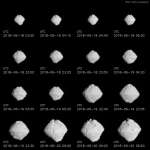 Hayabusa2 Approaches Asteroid Ryugu
Hayabusa2 Approaches Asteroid Ryugu
24.06.2018
It looks like a big space diamond -- but with craters. It's 162173 Ryugu (Dragon's Castle), and Japan's robotic Hayabusa2 mission is now arriving at this near-Earth asteroid. Ambitious Hayabusa2 is carrying...
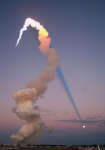 Rocket Plume Shadow Points to the Moon
Rocket Plume Shadow Points to the Moon
23.06.2018
Why would the shadow of a space shuttle launch plume point toward the Moon? In early 2001 during a launch of Atlantis, the Sun, Earth, Moon, and rocket were all properly aligned for this photogenic coincidence.
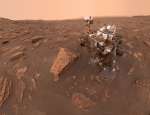 Curiosity s Dusty Self
Curiosity s Dusty Self
22.06.2018
Winds on Mars can't actually blow spacecraft over. But in the low gravity, martian winds can loft fine dust particles in planet-wide storms, like the dust storm now raging on the Red Planet.
 Galaxy in a Crystal Ball
Galaxy in a Crystal Ball
21.06.2018
A small crystal ball seems to hold a whole galaxy in this creative snapshot. Of course, the galaxy is our own Milky Way. Its luminous central bulge marked by rifts of interstellar dust spans thousands of light-years. On this long southern hemisphere night it filled dark Chilean skies over Paranal Observatory.
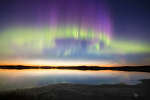 Northern Lights and Noctilucent Clouds
Northern Lights and Noctilucent Clouds
20.06.2018
Skies after the near-solstice sunset on June 17 are reflected in this calm lake. The tranquil twilight scene was captured near Bashaw, Alberta, Canada, northern planet Earth. Usually spotted at high latitudes in summer months, night shining or noctilucent clouds hang just above the horizon, transfusing light into a darker sky.
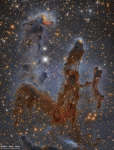 Pillars of the Eagle Nebula in Infrared
Pillars of the Eagle Nebula in Infrared
19.06.2018
Newborn stars are forming in the Eagle Nebula. Gravitationally contracting in pillars of dense gas and dust, the intense radiation of these newly-formed bright stars is causing surrounding material to boil away. This image...
 Ancients of Sea and Sky
Ancients of Sea and Sky
18.06.2018
They may look like round rocks, but they're alive. Moreover, they are modern versions of one of the oldest known forms of life: stromatolites. Fossils indicate that stromatolites appeared on Earth about 3.7 billion years ago -- even before many of the familiar stars in the modern night sky were formed.
|
January February March April May |
|||||||||||||||||||||||||||||||||||||||||||||||||